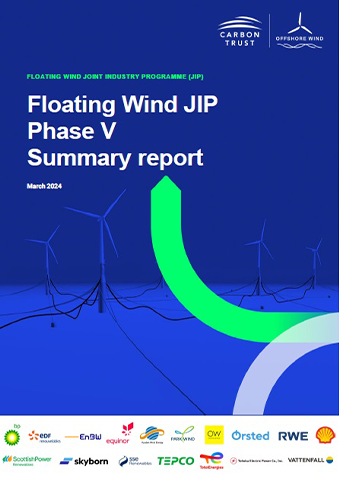Key findings:
The report provides an in-depth summary of the following projects:
- Fabrication, Infrastructure and Logistics (FIL): researched common infrastructure requirements and constraints for large scale floating wind farms to understand investment needs, and to provide a framework for port selection for developers and fabricators.
- Major Component Exchange with Self-Hoisting Cranes (SHC): identified potential solutions to conduct onsite major component exchange of Wind Turbine Generator (WTG) nacelle components without relying on large heavy lift vessels or towing a substructure to port.
- Stick Building Wind Turbine Generators On-Site (SBOS): assessed installation methods for WTG assembly at floating offshore wind sites.
- Fatigue Analysis of High Voltage Electrical Equipment in Floating Structures (HVEF): investigated high voltage electrical equipment design and its suitability for operation in offshore floating structures.
- Moorings System Redundancy, Reliability & Integrity (MRR&I): provided clarity around the definition of ‘redundancy’ in relation to a three-cluster mooring system – with either a single leg or two legs per cluster.
- Dynamic Cable Failure Rates and Standards (DCFR): provided insight into the feasibility for the application of dynamic cables in floating wind and advise on the potential changes required in dynamic cable design, qualification and testing.
Explore more related content:
Accelerating innovation to Net Zero: Offshore wind
Designing an effective offshore wind market: How competitive auctions can move beyond price


